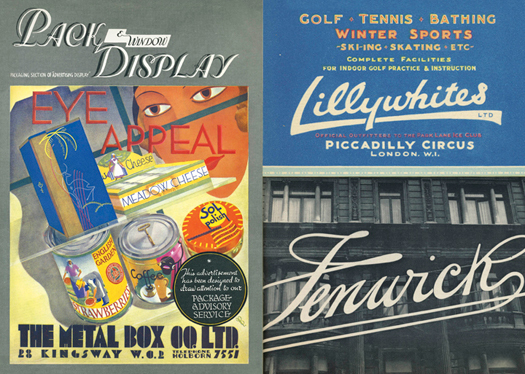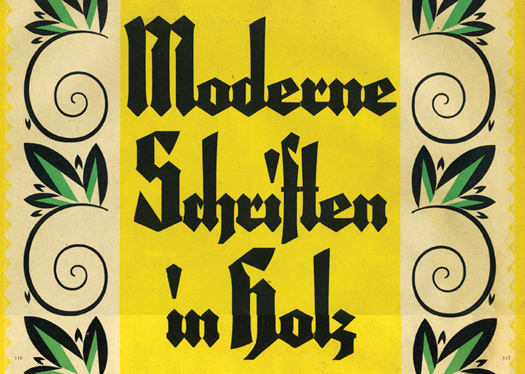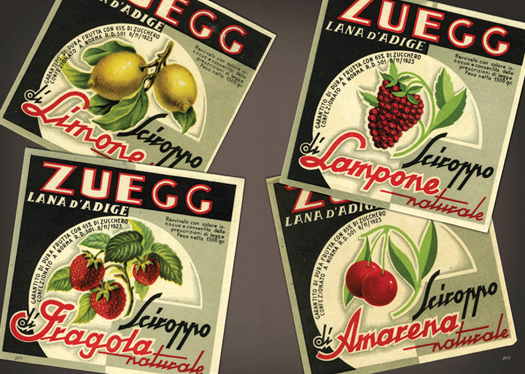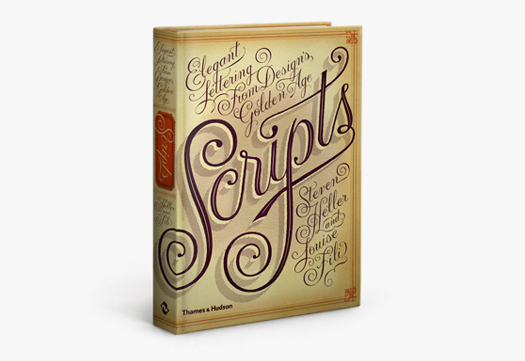
Cover of the book Scripts: Elegant Lettering from Design's Golden Age by Louise Fili and Steven Heller
“No one person ever invented an alphabet,” wrote Type-maven Tommy Thompson. Script typefaces were no exception. During the letterpress era they were in such great demand that many people “invented” them, and many others copied them. In some commercial printing shops, composing cases filled with scripts were stacked floor to ceiling to the exclusion of other type. Printers routinely amassed multiple styles of the heavy metal type fonts, each possessing a distinct twist, flourish or quirk, used to inject the hint of personality or dash of character to quotidian printed pieces. Fonts had names like Wedding Plate Script, Cursive Script, Engravers Script, Bank Script, Master Script, French Script, Stationers Semiscript and Myrtle Script — Myrtle? — there were countless others. They surfaced in Europe and America. And the exact same types in France, for example, could be found in Italian foundries with different names.
Scripts signaled propriety, suggested authority yet also exuded status and a bourgeois aesthetic. The wealthy classes couldn’t get enough fashionable scripts in their diet. Likewise, the nouveau riche embraced them too — maybe it helped them to appear even more wealthy.
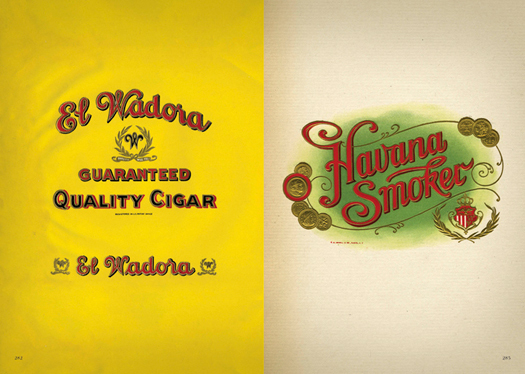
Here and below: spreads from the book Scripts: Elegant Lettering from Design's Golden Age by Louise Fili and Steven Heller
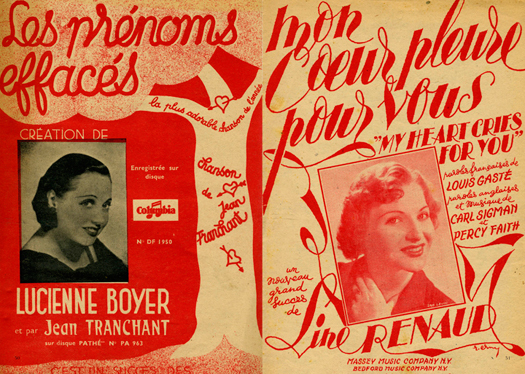
Scripts were at once decorative and symbolic — the quintessence of class and classiness. Yet the ultimate widespread availability and accessibility to anyone who wanted to use them eventually made scripts classless and déclassé. Nonetheless, they never completely went out of style — and they naturally come back again and again, albeit often as novelty.
Script type was developed “to its finest stage of beauty,” wrote Thompson in The Script Letter: Its Form, Construction and Application (1955), “during the seventeenth and eighteenth centuries by European penmen and engravers.” The one man he singles out for the highest respect was George Bickham the Elder (1684-1758), who in 1741 published The Universal Penman, a veritable pantheon of great penmen’s works to that date. Thompson notes that “Little has been contributed to the design of the script letter since Bickham’s time save to cast its forms into type and, I must add, to tighten and often distort the characters to the will of the machine.” Indeed Bickham’s may be to script lettering what Giambattista Bodoni's Manuale Tipografico (1818) is to Roman letters.
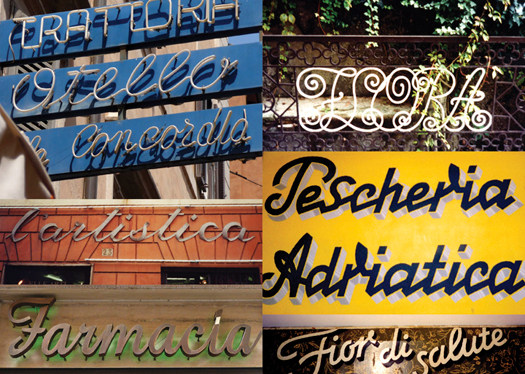

Writing the perfect script was indeed a chore for the uncoordinated (just try to consistently achieve the 54 degree slope that defines the essential script), and conversely total joy for others — especially those sensuous flourishes. Thompson wrote, “No two penmen or lettering men, to my knowledge, have used them in the same manner. They remain a personal element.”
One self-satisfied “testimonial” published in Real Pen Work about a hardworking penman states: “Such Wonderful Improvement must seem more a fairy dream than a reality to anyone who never saw this Self-Instructor… it is easy enough to learn to write well when you have the proper instruction.”
Achieving perfection was nirvana, and one of the most comprehensive guides published over a century after Bickham’s, Real Pen Work (1881), billed itself as the “Greatest means ever known for learning to write an elegant hand.” It went further by asserting the book “Contains more Copies, more Ornamental Work, and more and better Instructions, for learning the Whole Art of Penmanship without a teacher, than any other work ever published in the World.” Such bald-faced hyperbole not withstanding, perfecting script writing was considered a lofty virtue worth the effort. Making words flow off the pen gracefully was on a par with the Platonic ideal.
